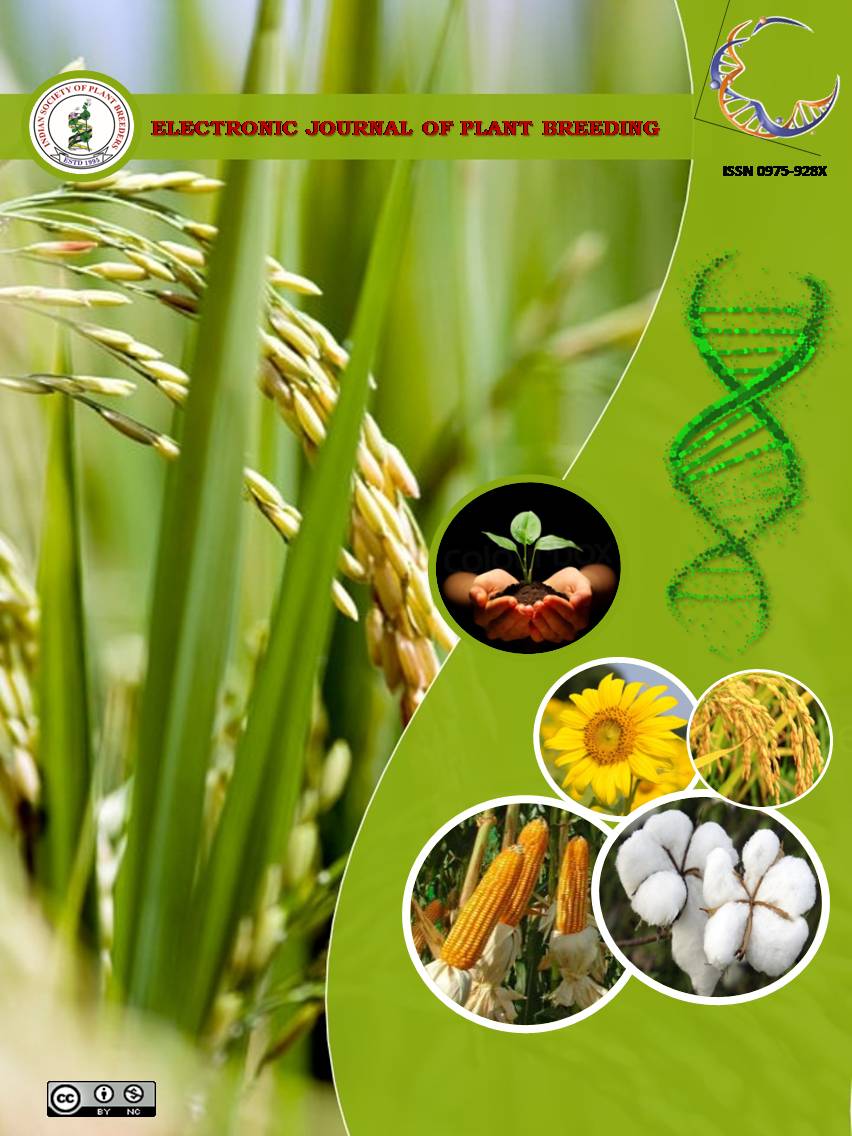Assessment of genetic diversity in linseed germplasm using morphological traits
Abstract
The genetic diversity among 61 linseed genotypes along with 4 checks was studied in the present investigation at the Experimental Farm of Punjab Agricultural University, Regional Research Station, Gurdaspur. Results revealed that the sufficient genetic variability was observed for all the characters studied based on various genetic variability parameters. High heritability coupled with high genetic advance for plant height, technical height, capsules per plant, test seed weight and seed yield per plant indicated additive type gene action and improvement can be made through simple selection. Principal component analysis (PCA) indicated that, out of total principal components, five PCs contributed 84.68 per cent to the total variance amongst the genotypes assessed for eight agronomic traits. PC1 contributed maximum towards the variability (30.91%) followed by PC2 (15.89%) and PC3 (14.95%). Cluster analysis grouped the accessions under four major clusters which indicated a fair association of genetic diversity. Sufficient variability was observed in the genotypes based on phenotypic and genotypic variance, principal component analysis and cluster analysis which can be utilized by researchers in future linseed breeding programmes.

